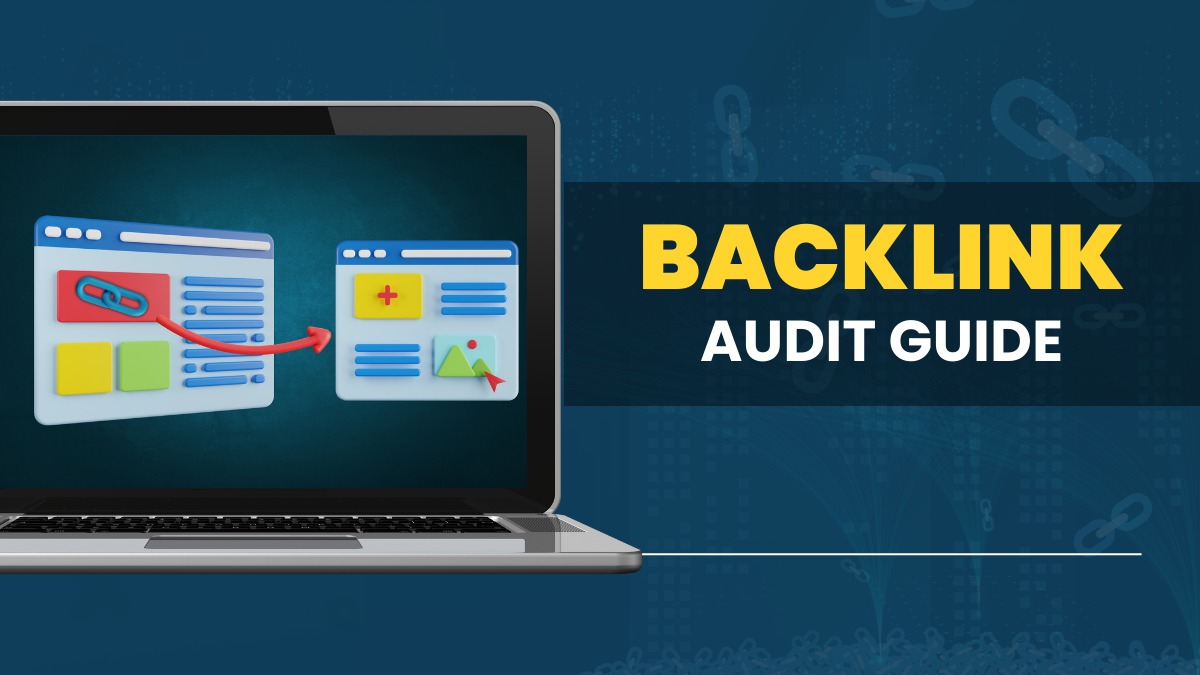Welcome to the essential guide on backlink auditing. You’re in the right place if you’re puzzled by stagnant website traffic or contemplating a link-building campaign to bolster your website’s backlink profile.
Conducting a backlink audit is crucial as it’s the first step in addressing any issues. A poor backlink profile may contain harmful links that can negatively impact your site’s SEO and potentially lead to search engine penalties.

Imagine trying to acquire new backlinks, only to find out later that harmful links undermine them, and you weren’t aware of it.
In this guide, we’ll explore the process of identifying and disavowing harmful links, discuss how we conduct backlink audits for new clients and provide a step-by-step walkthrough for examining your backlink profile thoroughly. Let’s uncover the secrets to optimizing your website’s backlink health through diligent auditing.
Key Takeaways
- Use tools such as Google Search Console, Ahrefs, and similar platforms to locate your links.
- Compile a comprehensive list of all your links.
- Distinguish spammy and harmful links from the rest.
- Scrutinize for incorrect and unnatural linking patterns.
- Assess the quality of links and scrutinize the anchor text profile.
- Formulate a strategic plan based on your analysis.
What Is A Backlink Audit?
A backlink audit involves a comprehensive review of all inbound links directing to your website from external sources. These links, referred to as backlinks, are essential for enhancing your website’s visibility and affecting its search engine rankings.
In a backlink audit, each link undergoes a thorough assessment to determine its quality, relevance, and overall influence on your site’s SEO performance.
This assessment entails examining factors such as the linking domain’s authority, the link’s context, and its alignment with your website’s content. As the experienced seo services provider organization routinely conducts backlink audits for our internal websites and clients seeking support with their Managed Link Building initiatives.
Why Conduct Backlink Audits?
The main objectives of conducting backlink audits are:
- Assessing the quality and relevance of current backlinks.
- Identifying any toxic or spammy backlinks that may have a detrimental effect on SEO.
- Analyzing the distribution of anchor text for optimization purposes.
- Finding broken or redirected backlinks.
- Evaluating the overall condition of the website’s backlink profile.
- Identifying opportunities to disavow harmful backlinks.
- Detecting negative SEO attacks and implementing necessary corrective actions.
Regular audits allow you to identify and resolve any issues with your backlink profile, minimizing potential risks. Further elaboration on identifying and dealing with these issues will be provided later in the post.
The Significance Of Maintaining A Healthy Backlink Profile
When conducting website audits, a common issue we encounter is the presence of inferior-quality backlink profiles. These profiles typically consist of many Web 2.0 links that seem spammy, along with duplicated articles sourced from low-cost PBN (Private Blog Network) sites.
These subpar backlink profiles pose significant risks to a website’s ranking potential. They can hinder efforts to rank in search engine results or, in severe cases, result in penalties from search engines. This is mainly because such profiles can indicate to search engines, notably Google, that attempts are being made to manipulate rankings through artificial means, which is strongly discouraged.
Therefore, it’s crucial to stress the importance of cultivating a diverse range of backlinks while prioritizing acquiring high-quality links from reputable sources. This approach not only helps reduce the risks associated with poor backlink profiles but also bolsters the website’s overall credibility and authority in the eyes of search engines. This, in turn, enhances its potential for higher rankings and sustained organic traffic.
The Role Of Backlinks In SEO Strategy
Backlinks continue to be essential components of a robust SEO strategy. While Google has stated that they aren’t among the top three ranking factors, many SEO professionals question the validity of this claim. It’s widely agreed upon within the SEO community that backlinks play a crucial role in determining search rankings.
Google’s reluctance to fully endorse the importance of backlinks is rooted in concerns about potential manipulation of its algorithm. Backlinks essentially serve as endorsements from other websites, indicating the value and credibility of your content. Search engines, including Google, consider these endorsements when evaluating your site’s relevance and authority in search results.
However, it’s essential to acknowledge that improper use of backlink-building techniques can lead to complications. Engaging in unnatural link-building practices or becoming a target of negative SEO attacks from competitors can harm your domain’s reputation and visibility.
Identifying Harmful Links
Poor or harmful backlinks can have a significant negative impact on your website’s SEO. They usually display traits such as low quality, irrelevance, or spam-like behavior.
Examples of these undesirable links include those coming from link farms, low-quality directories, unrelated websites or articles, and websites hosting harmful content, malware, or questionable practices.
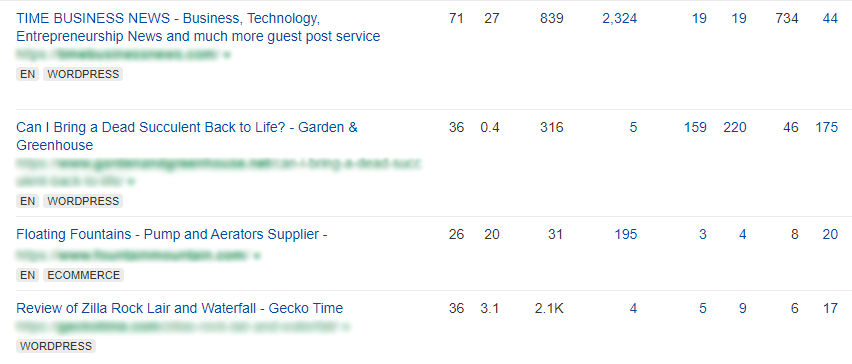
These harmful links undermine the trustworthiness of your backlink profile and could jeopardize the safety of your website’s visitors.
Spotting toxic links with tools like ahrefs can be challenging because they often mimic legitimate backlinks. However, it’s essential to identify and deal with them. It’s important to note that while Google might overlook some of these links, they still have the potential to harm your website’s performance or lose value over time, even though penalties for unnatural link building have become less common in recent years.
Also Read: 5 Easy Ways To Spy On Your Competitors Backlinks
The Tools Required For Backlink Audits
A successful backlink audit requires utilizing the appropriate tools to collect, scrutinize, and comprehend data. This section outlines the indispensable tools required for the task.
Google Search Console

Google Search Console is an essential tool for webmasters and SEO professionals. It offers comprehensive insights into various aspects of a website’s performance. One of its key features is tracking inbound links pointing to your site, providing valuable information on the sources of your site’s backlinks. Additionally, it offers accurate data on organic traffic, specifically highlighting traffic directed to pages ranking on Google’s search engine results pages.
Users can delve deeper into their site’s link profile within the ‘Links’ section of Google Search Console, examining both external and internal links. This breakdown enables webmasters to identify the quantity and quality of backlinks pointing to their sites. Moreover, the tool provides detailed information on the domains that link to your website, offering valuable insights into your site’s broader network of connections.
While Google Search Console is instrumental in backlink analysis, its primary utility lies in monitoring a website’s overall health. Webmasters predominantly rely on it to track vital metrics such as traffic trends, clicks, impressions, and other performance indicators. By focusing on these aspects, users can comprehensively understand their site’s visibility and optimize their SEO strategies accordingly.
Third-Party SEO Tools
Various third-party SEO tools are explicitly crafted to analyze backlinks and other crucial aspects of website optimization. These tools serve as the cornerstone for conducting comprehensive backlink audits, offering insights into the quality, quantity, and relevance of backlinks.

Notable options in this domain include Ahrefs, Moz, Semrush, and Majestic. Ahrefs stands out as our preferred choice due to its extensive backlink database.
These tools play a vital role in:
- Uncovering new backlinks to the website, aiding in understanding its link profile’s growth.
- Evaluating the authority and reliability of domains linking back to the website.
- Assessing the diversity of anchor texts and the strategic use of keywords in backlinks.
- Identifying potentially harmful or toxic links through specialized algorithms.
- Third-party metrics such as Domain Rating (DR), toxicity score, and organic traffic are utilized to conduct in-depth analyses and make informed decisions regarding link-building strategies and website optimization efforts.
Google Disavow Tool
In certain scenarios, individuals managing websites may need to disavow certain links to protect their websites’ search engine optimization (SEO) performance.
The Google Disavow Tool is a feature that allows website owners to submit a list of links they wish Google to ignore when assessing their website’s backlink profile.
Typically, website owners resort to using this tool as a final option when faced with deemed harmful links that cannot be removed manually through other means.
It’s important to stress that using the disavow tool should be considered a last resort, indicating that all other avenues for addressing harmful links have been exhausted.
As mentioned earlier, Google’s algorithms are designed to recognize and disregard many harmful links automatically. However, it’s worth noting that there have been cases where website owners mistakenly disavowed beneficial backlinks, believing them to be harmful. This misjudgment has led to unintended negative impacts on their website’s performance.
Hence, website owners must approach the use of the disavow tool with caution. Blindly disavowing links without proper evaluation can potentially do more harm than good to the website’s SEO efforts. Therefore, it is recommended that each link be carefully considered and assessed before utilizing this tool.
Conducting A Backlink Audit: Step-by-Step Guide
In this section, we will present a detailed guide outlining the steps to conduct a backlink audit. Our focus will be on identifying and addressing negative, toxic, and harmful links while also assessing the entirety of your backlink profile.
Gathering A Compilation Of Inbound Links
The crucial initial step in performing a backlink audit involves compiling a thorough list of all inbound links pointing to your website. This process is fundamental for gaining insights into your site’s backlink profile and evaluating its overall health and authority.
To gather this essential data, you can utilize various sources:
- Google Search Console: Navigate to the ‘Links’ section within the console to access valuable insights into the external links directing users to your site. This data, sourced directly from Google, provides foundational insights into your site’s backlink profile.
- Third-Party SEO Tools: For comprehensive backlink analysis, utilize tools such as Ahrefs, Moz, Semrush, or Majestic. These tools offer detailed lists of backlinks along with metrics and insights regarding their quality and relevance.
It’s worth noting that Ahrefs stands out for its extensive backlink database and user-friendly interface, making it a preferred choice for many SEO professionals and marketers.
Once you’ve gathered the necessary data, the subsequent step involves organizing it into a spreadsheet for systematic analysis. Platforms like Google Sheets facilitate structured data organization, enabling effective evaluation of each backlink’s quality, relevance, and impact on SEO performance.
Google Sheets provides robust features for sorting, filtering, and analyzing large datasets, making it an ideal tool for managing the intricacies of a backlink audit.
Detect Spammy And Harmful Links
Identifying spammy and harmful links within your collected data is a crucial step in maintaining the integrity and effectiveness of your website’s SEO strategy.
To begin this process, you’ll need to utilize your selected SEO tools to assess each backlink present in your dataset thoroughly. This evaluation will provide insights into each link’s quality and potential risks.
During this assessment, it’s essential to remain vigilant for various indicators that may suggest a link’s potential harm. However, it’s crucial to approach this task with a holistic perspective, understanding that individual factors should be considered within the broader context.
Some key indicators to watch out for include the following:
- Irrelevant Content: Links leading to content unrelated to your website’s niche or industry.
- Unnatural Anchor Text: Links containing anchor text that appears forced or unrelated to the linked content.
- Low-Quality Design: Links originating from websites with poor design quality or a lack of professionalism.
- Excessive Advertisements: Links embedded within web pages cluttered with excessive advertisements.
- Duplicate Content: Links leading to duplicate or plagiarized content found across multiple websites.
- Irrelevant or Spammed-Out Comments/Links from Forums: Links originating from forums or comment sections with irrelevant or spammy content.
- Automated Linking: Links generated automatically without genuine editorial oversight or relevance.
- Link Farms: Links originating from websites specifically created to host many backlinks.
- Overabundance of Web 2.0 Links: Links coming from an excessive number of Web 2.0 platforms.
- Overuse of Keywords: Links containing an unnatural density of keywords, potentially indicating manipulative SEO tactics.
- Unusual TLDs: Links from websites with uncommon or suspicious top-level domains.
- Lack of Contact Information: Links leading to websites lacking clear contact information or identifiable ownership.
- Rapid Link Growth: Links from websites that have experienced an unusually rapid increase in backlink volume.
- Irrelevant Traffic or Minimal Traffic: Links originating from websites with irrelevant or minimal visitor traffic.
- Traffic Originating From Unusual Keywords: Links leading to your website from sources with unrelated or suspicious keyword traffic.
- Foreign Language Sites: Links from websites primarily in languages unrelated to your target audience.
- Hidden or Invisible Links: Links embedded within a website’s code or hidden from plain view.
- Non-Contextual Links: Links placed within content where they lack relevance or context.
- Excessive Nofollow Links: Links tagged with the “nofollow” attribute excessively, potentially indicating attempts to manipulate search engine rankings.
It’s essential to note that while these factors serve as warning signs, the presence of one or more of them does not definitively classify a link as harmful. Instead, it requires careful consideration within the broader context of your website’s SEO strategy and goals.
Inspect For Unnatural Patterns
Review your backlink profile thoroughly to identify any unnatural patterns that may have developed. These patterns typically arise from practices that you have personally engaged in and could potentially flag your backlink profile as unnatural. Key indicators to examine include:
- Sudden and unnatural spikes in the number of backlinks.
- Limited diversity in the types of links directing to your site.
- Over reliance on exact-match anchor text.
- Engagement in extensive reciprocal link exchanges.
- Repetitive utilization of identical anchor text across multiple links.
- Placement of links in footers and sidebars across a multitude of websites.
- Inadequate prioritization of link building for your homepage.
- Excessive focus on generating links for the inner pages of your site.
While certain links may originate from reputable sources, the methodology employed in acquiring them could contribute to patterns that might trigger concerns within Google’s algorithms.
Evaluating Link Quality
Following the identification of potentially harmful backlinks, it is essential to conduct a comprehensive evaluation of the remaining backlinks. This ensures that the links contribute positively to your website’s reputation and performance.
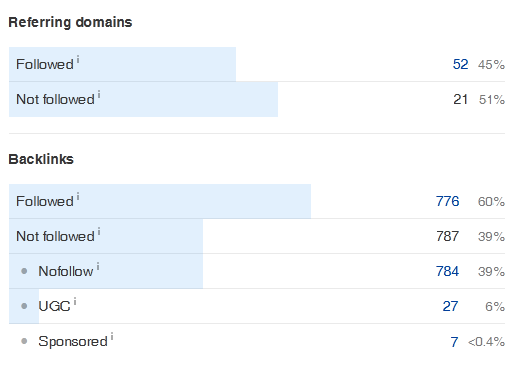
- Relevance of the website/post: Assess whether the content of the linking website relates to yours. Relevant links enhance your website’s credibility and search engine rankings.
- Anchor text analysis: Review the text used in the clickable link. It should accurately represent the content of the linked page and ideally include relevant keywords for optimization.
- Domain/Page Authority Assessment: Evaluate the authority and credibility of the linking website or page. Higher authority domains/pages are more likely to benefit your website’s SEO efforts.
- Traffic assessment: Consider the amount of traffic generated by the link to your website. Links from high-traffic sources can increase visibility and attract more visitors.
- Dofollow link presence: Determine whether the links are marked as “dofollow” or “nofollow.” Dofollow links allow search engines to follow them and pass link equity, providing more significant SEO benefits.
By meticulously evaluating these factors, you can identify the most valuable links that positively contribute to your website’s overall performance and authority.
Analyzing Anchor Text
The importance of anchor text lies in its role as a signal to search engines regarding the content and relevance of the linked page. As a hyperlink label, it informs users and search engine crawlers about the content they’ll find upon clicking. The selected anchor text can significantly influence search engine rankings and user engagement.
Diversifying anchor text is crucial to avoid relying too heavily on a single type, especially those densely packed with keywords, which might trigger scrutiny from search engines. Such practices could imply an effort to manipulate search results rather than provide genuine value. By incorporating variations such as branded terms, naked URLs, and generic phrases, websites can demonstrate natural linking patterns and broader relevance to different topics.
It’s essential to avoid keyword stuffing within the anchor text. Although once a common SEO tactic, search engines now easily detect such manipulation. Websites that employ keyword stuffing risk penalties or reduced rankings. Finding a balance and using keywords thoughtfully within anchor text is paramount.
Anchor text should seamlessly blend into the surrounding content and align with the page’s overall context. Hyperlinks within the text should flow naturally, enhancing readability. Forcing anchor text or using unrelated terms can disrupt the user experience and may be viewed as spammy by search engines. Prioritizing natural language ensures that anchor text fulfills its SEO purpose while enhancing the user experience.
Develop A Plan
Once you’ve completed a thorough audit of your entire backlink profile, it’s essential to devise a solid action plan.
While some SEO experts recommend regularly disavowing links, we avoid this practice unless we encounter severe cases of poor link building that harms the website’s SEO performance.
In most cases, our strategy focuses on actively cultivating high-quality backlinks to address any deficiencies identified during the audit.
For instance:
- If we notice an excess of exact match anchors, our approach diversifies the anchor text distribution by incorporating more branded, URL, and miscellaneous anchors.
- When the distribution of links is imbalanced, with too much focus on inner pages, we prioritize acquiring more links directed towards the homepage.
- When dealing with numerous low-authority link spam, we focus on acquiring links from reputable and authoritative sources.
By implementing strategies that differ from previous approaches, we aim to rectify shortcomings and rebuild the website’s credibility and reputation with Google. This proactive approach lets us gradually enhance the website’s SEO performance and bolster its online presence.
Also Read: 11 Best Backlink Checkers in Today’s SEO Market
Understanding The Impact Of Neglecting Backlink Audits
Frequent issues stem from neglecting to audit and manage your backlink profile regularly.
Decreased Organic Traffic
Neglecting to conduct backlink audits can have immediate and noticeable repercussions, particularly in the form of a significant decrease in organic traffic to your website. When your backlink profile consists of a considerable number of poor-quality, toxic, or irrelevant links, search engines may devalue these links, which in turn can cause your site to plummet in search rankings.
Consequently, your website will experience a reduction in the number of visitors it attracts. This underscores the importance of regularly reviewing and managing your backlink profile to maintain the health and performance of your website in search engine results.
Penalization By Search Engines
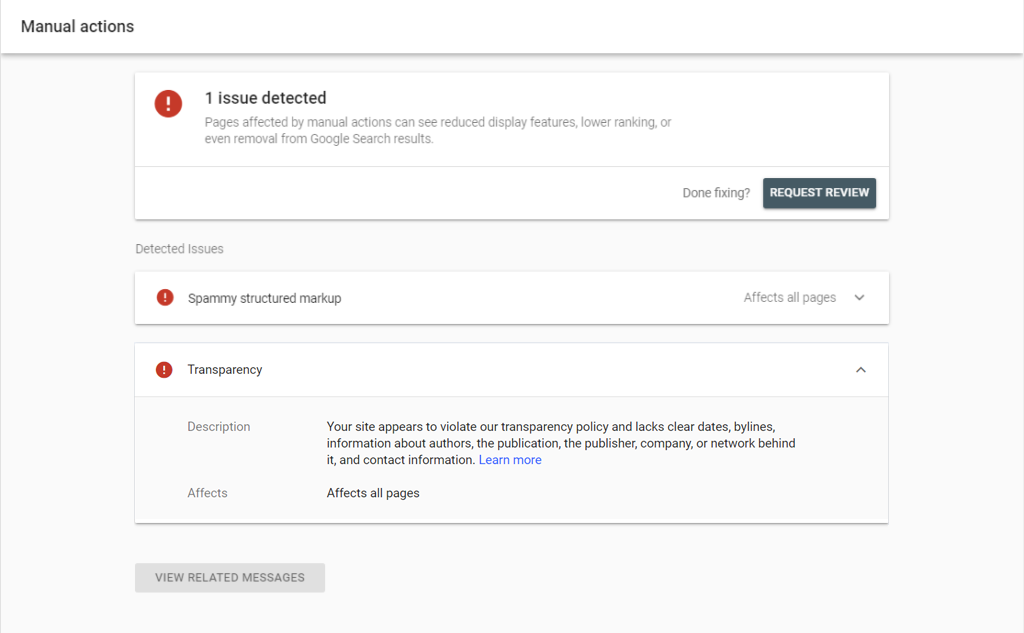
Search engines have stringent criteria for selecting websites to feature in their search results. They prioritize sites with high-quality content, excellent user experiences, and adherence to guidelines. One crucial factor they consider is a website’s backlink profile.
Neglecting to maintain a strong backlink profile can have serious consequences. Search engines might penalize a site if they detect manipulative link-building tactics, like buying or exchanging links, or if the profile contains spammy or irrelevant links. These penalties can lead to a significant drop in search engine rankings.
Recovering from such penalties can be challenging and time-consuming. It often involves conducting a thorough audit of the backlink profile, identifying and removing harmful links, and acquiring high-quality, organic links to bolster the site’s credibility and trustworthiness with search engines. Additionally, regaining lost rankings may require improving other aspects of the site, such as content quality, user experience, and technical optimization.
Negative Impact On Domain Authority
Domain authority is a crucial metric that reflects your website’s credibility and trustworthiness in the online realm. It takes into account various factors that contribute to how reliable and influential your site appears.
One significant issue arises from neglecting backlink profiles, which often contain numerous low-quality or irrelevant links. These links can greatly reduce your domain authority, raising doubts about your website’s legitimacy and worth in the eyes of both search engines and users.
A drop in domain authority not only affects your website’s ranking in search engine results but also undermines your efforts to establish authority in your niche. It limits your ability to attract and retain an interested audience, ultimately stunting your growth and success in the competitive online arena.
Therefore, it’s essential to maintain a vigilant approach to managing backlinks and optimizing your website to preserve and improve your domain authority over time.
Implications For Your Link Building Strategy
When your current backlink profile contains numerous low-quality or potentially harmful links, it can significantly diminish the impact of any new, high-quality links you obtain. This implies that despite investing resources in acquiring valuable backlinks, their ability to influence your website’s performance positively may be restricted by the negative effects of existing poor-quality or toxic links.
Essentially, these inferior links can serve as a hindrance, obstructing your endeavors to develop a solid and advantageous backlink profile.
Loss Of Online Credibility
Failing to monitor and manage your backlink profile can pose a substantial risk to your website’s online reputation. If users come across your site through spammy or harmful links, it erodes their trust and deters them from interacting with your content.
In essence, the caliber of your backlinks mirrors the overall quality and credibility of your website. Hence, consistently upholding a high-quality backlink profile is essential for protecting your online standing and fostering trust with your audience.
Guidelines For Developing A Strong Backlink Profile
A robust backlink profile is crucial for effective search engine optimization (SEO) and establishing a formidable online presence. In this section, we offer valuable advice and strategies for actively cultivating and upholding a robust backlink profile.
Focus On Quality Rather Than Quantity
In the realm of acquiring backlinks, prioritizing quality over quantity is essential. While some argue that each link contributes value, we advocate focusing on obtaining links from reputable, authoritative sources directly relevant to your niche. This involves establishing connections with websites and platforms possessing credibility and relevance within your industry.
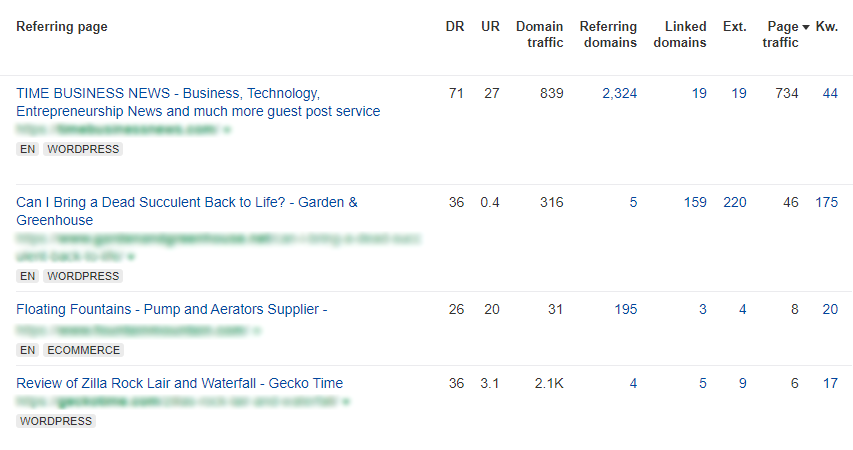
A single high-quality backlink, seamlessly integrated with your content and originating from a respected source, typically holds more weight regarding SEO impact than multiple low-quality links. By concentrating on acquiring these valuable links, you not only enhance the credibility and authority of your website but also improve its visibility and ranking potential in search engine results pages.
Create High-Quality Content
Crafting compelling and informative content plays a pivotal role in naturally attracting high-quality backlinks. When your content holds value for your target audience, it becomes more probable that other websites will link back to it.
To achieve this, concentrate on generating content that distinguishes itself and offers unique insights or solutions. This entails investing time and resources in creating content that aligns with your audience’s needs and interests, providing them with something distinctive and valuable that they cannot find elsewhere.
By consistently delivering such content, you establish your authority in your niche and increase the likelihood of other websites referencing and linking to your content. This, in turn, contributes to enhancing your website’s search engine rankings and bolstering your reputation and credibility within your industry. Therefore, prioritizing the creation of compelling and informative content is crucial as a foundational component of your digital marketing strategy.
Explore Guest Blogging And Contributor Opportunities
It is highly recommended that you actively pursue guest blogging opportunities and contribute content to reputable websites within your industry. When you guest blog, you are typically allowed to include a link back to your own website either in your author bio or within the post itself.
These backlinks hold significant value for your website’s search engine optimization (SEO) efforts, especially when the websites hosting your content are well-regarded and relevant to your niche. By engaging in guest blogging and contributing to authoritative sites, you increase your online visibility and establish credibility and authority within your industry. This can lead to greater exposure, traffic, and potential business opportunities for your brand or business.
Also Read: The Insider’s Guide to Successful Blogger Outreach
Contact Influencers And Industry Leaders
Establish meaningful connections with influential figures and leaders in your industry by proactively reaching out and providing valuable contributions. Share pertinent insights, expertise, or resources that align with their interests and goals. Through consistent value delivery, foster rapport and trust with these individuals over time.
As these relationships progress, explore collaborative opportunities such as co-authoring articles, embarking on joint projects, or forging partnerships relevant to your niche. These joint initiatives enhance your credibility and visibility and broaden your reach to new audiences and networks.
Participating in collaborative ventures allows you to leverage the expertise and networks of others, potentially securing valuable backlinks from reputable sources and expanding brand exposure. By actively seeking and nurturing these connections, position yourself for sustained success and advancement within your industry.
Create A Resourceful Resource Page
Create a webpage on your website focused on delivering valuable resources in your industry. Offer detailed insights, practical tools, and helpful guides tailored to your target audience’s needs. Thorough and resourceful content increases the chances of other websites citing your page as a credible source. This boosts your website’s backlink profile, improving its authority and visibility in the industry.
Broken Link Building
Identifying broken links on other websites within your niche can be an effective strategy for enhancing your website’s visibility and establishing backlinks. Broken links indicate that the content or resources they were linking to are no longer accessible.
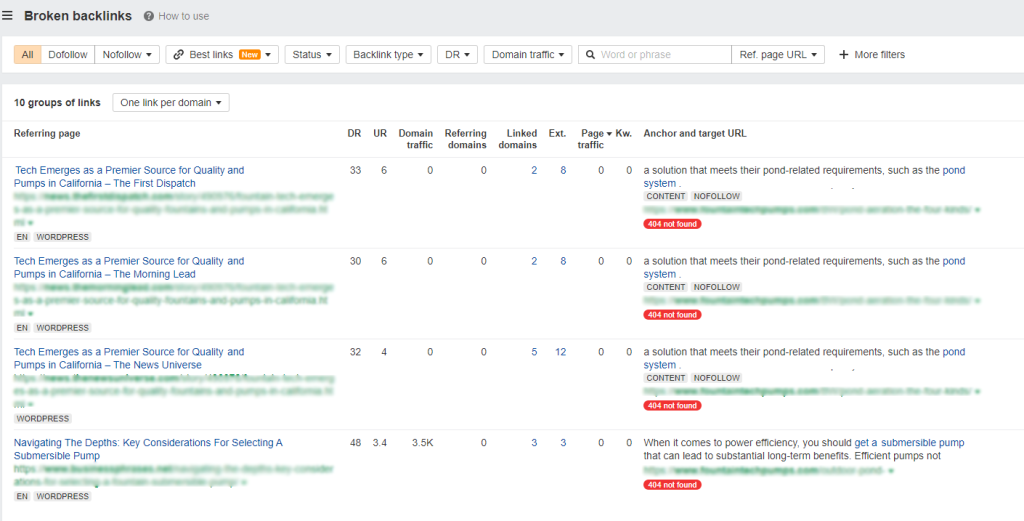
By offering your relevant content or resources as a substitute for these broken links, you aid the website owner in maintaining a positive user experience for their visitors and create an opportunity for yourself to secure a new backlink.
When reaching out to the website owner or administrator, it’s essential to courteously inform them about the broken link you’ve noticed and suggest your content or resources as an alternative. This approach demonstrates your willingness to help improve their website while also promoting your valuable content.
If they agree to replace the broken link with yours, you gain a new backlink to your site, potentially enhancing your website’s visibility among their audience.
Utilize Social Media Platforms
Utilize social media platforms to distribute the content you create. Although social signals themselves may not directly affect search engine optimization (SEO), sharing your content amplifies its visibility and increases the probability of it being linked to by others. This is the reason behind integrating social signals into all our client’s websites as part of our Managed Link Building program.
Monitor Your Backlink Profile Regularly
Regularly monitoring your backlink profile is crucial for maintaining the health and effectiveness of your website’s SEO strategy. Utilizing tools such as Google Search Console and third-party SEO tools enables you to track and analyze the backlinks pointing to your site.
Consistent monitoring of your backlink profile helps you stay informed about any new backlinks acquired over time. This awareness is essential as it allows you to assess the quality and relevance of these new links. Additionally, monitoring your backlink profile assists in identifying any changes or fluctuations in the number or quality of backlinks, which could potentially impact your website’s search engine rankings.
In summary, actively monitoring your backlink profile ensures you have a comprehensive understanding of your site’s inbound links, enabling you to make informed decisions to maintain and improve its SEO performance.
Focus On Anchor Text Diversity
Analyzing the anchor text profile is a pivotal aspect within our off-page SEO audit framework, highlighting its crucial role in refining website performance.
We stress the significance of cultivating diversity within each website’s anchor text profile. This diversity serves as a fundamental element in presenting an organic and genuine online presence to search engines, ultimately bolstering visibility and credibility. It’s vital to proceed cautiously, steering clear of the risks associated with excessively optimized anchor text, which may trigger penalties from search engines.
Our approach prioritizes incorporating various anchor text formats to ensure a comprehensive profile. This entails strategically integrating branded terms, naked URLs, and generic phrases across the website’s content and backlink portfolio. Through this multifaceted strategy, we aim to augment the website’s relevance and authority, optimizing its performance in search engine results.
Ensure Adherence With Search Engine Guidelines
When establishing your backlink profile, it’s crucial to follow the guidelines set forth by search engines meticulously. This involves avoiding involvement in link schemes, refraining from excessive link exchanges, and steering clear of manipulative practices that could compromise your site’s link integrity.
While acknowledging the potential benefits of link exchanges between relevant websites, it’s imperative to exercise caution and not overly rely on this method. Overusing link exchanges could diminish their effectiveness and lead to negative repercussions for your site.
By adhering steadfastly to best practices, you safeguard the credibility and reputation of your website, while also mitigating the risk of penalties from search engines. Prioritizing compliance with these guidelines is essential for maintaining the long-term success and visibility of your online presence.
Perform Regular Backlink Audits
Regular audits play a critical role in the maintenance of your backlink profile. By conducting these audits, you can diligently identify and confront any recently acquired harmful or toxic links that may have infiltrated your profile over time. This proactive approach ensures that your backlink profile remains healthy, safeguarding the integrity and effectiveness of your website’s online presence.
Conclusion
In summary, backlink auditing is crucial for a strong SEO strategy. This article has outlined the importance of conducting comprehensive backlink audits, focusing on quality links, recognizing and handling harmful ones, and utilizing tools like Google Search Console and Ahrefs.
Failure to prioritize backlink audits can lead to significant consequences, including decreased organic traffic and search engine penalties. Therefore, regular backlink audits are essential to maintaining a healthy backlink profile and ensuring the long-term success of your website’s SEO efforts.
FAQs
What tools can I use to conduct a backlink audit?
Several tools, such as Ahrefs, SEMrush, Moz, Majestic, and Google Search Console, are available for conducting a backlink audit. These tools offer insights into your backlink profile, including metrics like domain authority, anchor text distribution, and referring domain diversity.
How do I identify toxic backlinks during a backlink audit?
Toxic backlinks are links from low-quality or spammy websites that can harm your site’s SEO performance. Signs of toxic backlinks include links from link farms, irrelevant websites, or those with a high spam score. Google Search Console and specialized SEO tools can help identify and disavow toxic backlinks.
What actions should I take after identifying toxic backlinks?
After identifying toxic backlinks, the primary action is to disavow them using Google’s Disavow Tool. This instructs Google to ignore those links when evaluating your website’s authority and relevance. Additionally, consider reaching out to webmasters to request the removal of toxic links, particularly if they are damaging your site’s reputation.
How can I improve my backlink profile during a backlink audit?
To enhance your backlink profile, focus on acquiring high-quality, relevant backlinks from authoritative websites within your niche. This can be achieved through strategies like content marketing, guest blogging, influencer outreach, and active participation in industry forums or communities.
